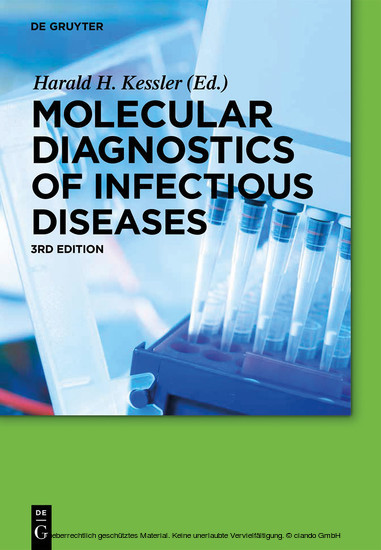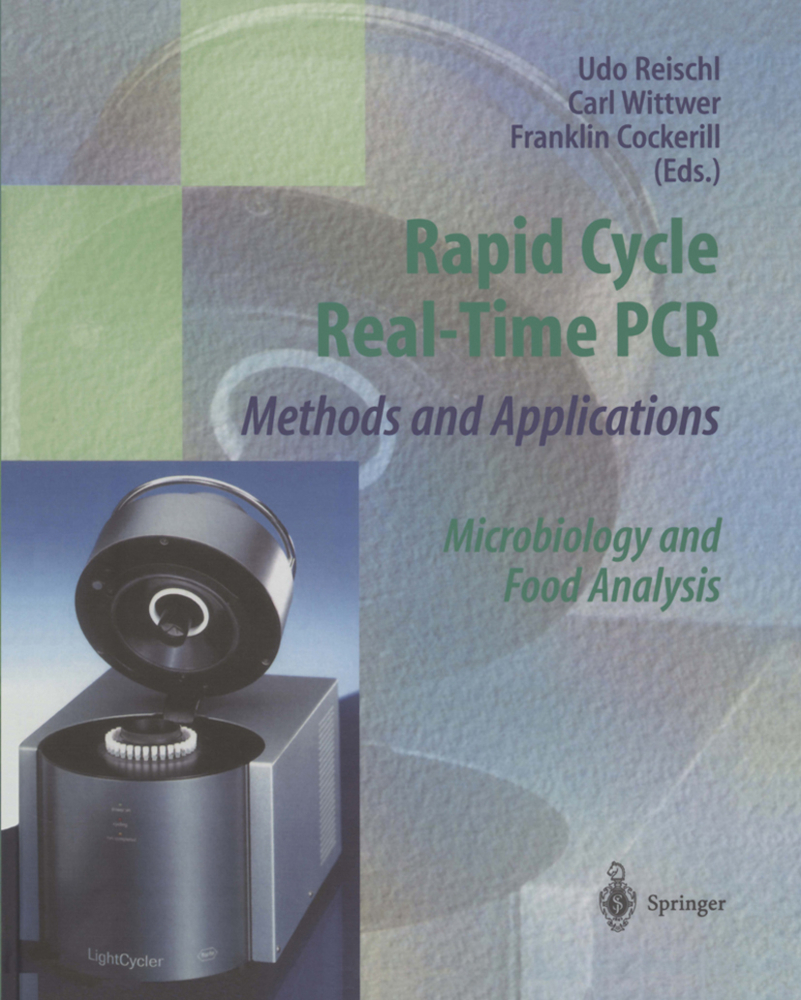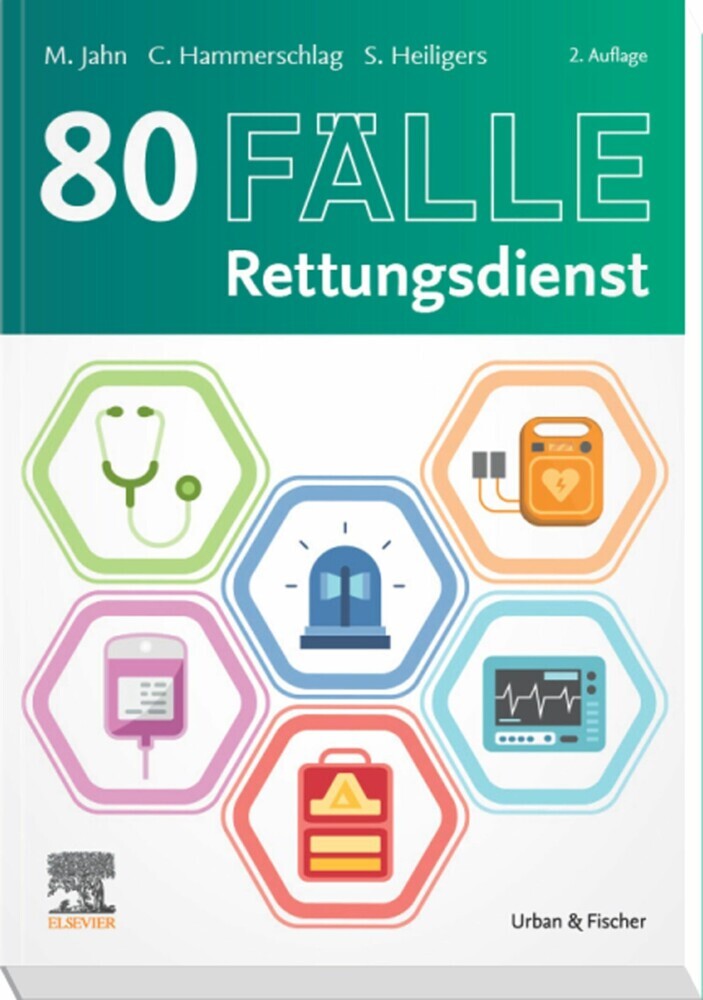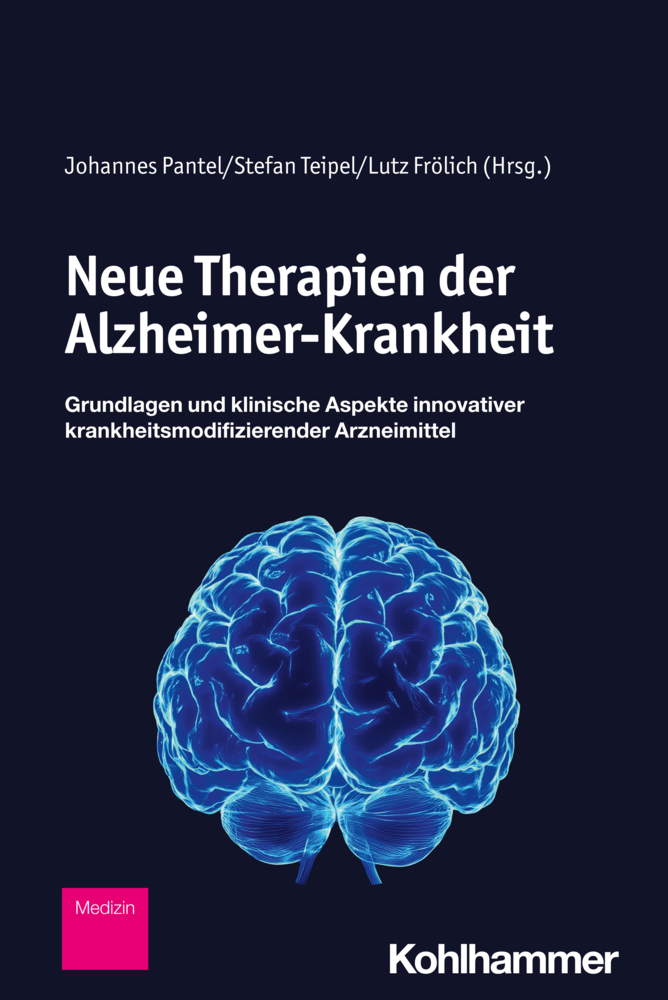Molecular Diagnostics of Infectious Diseases
The prevalence of infectious diseases is worldwide increasing. Therefore, detection methods for infectious pathogens change quickly. In the 3rd edition of Kessler´s Molecular Diagnostics of Infectious Diseases laboratory professionalists get valueable information about the current diagnostic methods, tipps and tricks in terms of sample processing, quality control, and interpretation of the results. For clinicians the book is a valuable aid for decision-making in ordering appropriate tests as well as in assuring the necessary quality of the sample material.
Harald H. Kessler, Medical University of Graz, Graz, Austria.
1;Preface;5 2;Contents;7 3;Authors Index;13 4;Contributors Index;15 5;1. Choice of adequate sample material;17 5.1;1.1 Viruses;17 5.2;1.2 Bacteria;35 5.3;1.3 Fungi;41 5.4;1.4 Protozoa;43 6;2. Stability of the specimen during preanalytics;45 6.1;2.1 Sample integrity during collection;45 6.1.1;2.1.1 Blood;45 6.1.2;2.1.2 Urine;46 6.1.3;2.1.3 Stool;46 6.2;2.2 Degradation of DNA;46 6.3;2.3 Degradation of RNA;47 6.4;2.4 Inhibitors of PCR;48 6.5;2.5 How can contamination during specimen collection and in the laboratory be avoided?;49 6.6;2.6 How can the sample identity be ensured?;50 6.7;2.7 Transport of diagnostic material;50 6.7.1;2.7.1 Category A Infectious Substances;50 6.7.2;2.7.2 Category B Infectious Substances;51 6.7.3;2.7.3 Exempt patient specimens;52 6.8;2.8 Stability of nucleic acids of selected pathogens during preanalytics;52 6.8.1;2.8.1 Human immunodeficiency virus type 1 (HIV-1) RNA;52 6.8.2;2.8.2 Hepatitis B virus (HBV) DNA;53 6.8.3;2.8.3 Hepatitis C virus (HCV) RNA;54 6.8.4;2.8.4 Chlamydia trachomatis and Neisseria gonorrhoeae DNAs;54 6.8.5;2.8.5 Viral pathogens producing respiratory tract infections;55 6.8.6;2.8.6 Pathogens in stool specimens;55 6.9;2.9 Take home messages;56 6.10;2.10 Further reading;56 7;3. Quality assurance and quality control;57 7.1;3.1 Accreditation issues;57 7.2;3.2 Standardization of diagnostic tests or test systems;58 7.3;3.3 Validation and verification work;60 7.4;3.4 Components of validation work;60 7.4.1;3.4.1 Internal and external quality controls;60 7.4.2;3.4.2 Proficiency testing;63 7.4.3;3.4.3 Validation of employee competency;64 7.4.4;3.4.4 Instrument maintenance and calibration;64 7.4.5;3.4.5 Correlation with clinical findings;65 7.5;3.5 Components of verification work;65 7.5.1;3.5.1 Components of verification work for IVD/CE labeled and/or FDA-approved or -cleared tests or test systems;66 7.5.2;3.5.2 Components of verification work for laboratory-developed tests or test systems;69 7.6;3.6 Take home messages;70 7.7;3.7 Further reading;71 8;4. Extraction of nucleic acids;73 8.1;4.1 Manual nucleic acid extraction protocols;73 8.2;4.2 Automated nucleic acid extraction platforms;74 8.2.1;4.2.1 Technology principle;74 8.2.2;4.2.2 Desirable features of automated platforms;75 8.3;4.3 Preparation of qPCR mixes and addition of eluates (qPCR assay setup);76 8.4;4.4 Currently frequently used commercially available platforms;76 8.5;4.5 Take home messages;78 8.6;4.6 Further reading;78 9;5. Amplification and detection methods;79 9.1;5.1 Nucleic acid-based tests;80 9.2;5.2 Target amplification methods;81 9.2.1;5.2.1 Real-time polymerase chain reaction (qPCR);82 9.2.2;5.2.2 Isothermal amplification techniques;91 9.2.3;5.2.3 Next generation sequencing (NGS);94 9.3;5.3 Signal amplification methods;95 9.3.1;5.3.1 Branched DNA (bDNA);96 9.3.2;5.3.2 Hybrid capture assay;96 9.4;5.4 What are the key challenges for the future?;97 9.5;5.5 Take-home messages;98 9.6;5.6 Further reading;99 10;6. Interpreting and reporting molecular diagnostic tests;101 10.1;6.1 Detection of viral infections;101 10.2;6.2 Detection of bacterial infections;102 10.3;6.3 Quantitative endpoint PCR;103 10.4;6.4 Real-time PCR (qPCR);104 10.5;6.5 Reporting results;105 10.5.1;6.5.1 Genetic names;107 10.5.2;6.5.2 Recommendations for reporting results of molecular tests;107 10.5.3;6.5.3 Recommendations for the contents of the molecular test report;108 10.6;6.6 Interpretation;109 10.7;6.7 Important issues when clinically interpreting molecular diagnostic results;111 10.8;6.8 Take home messages;112 10.9;6.9 Further reading;112 11;7. Human immunodeficiency virus;113 11.1;7.1 Major symptoms;115 11.1.1;7.1.1 Untreated individuals;115 11.1.2;7.1.2 Treated individuals;116 11.2;7.2 Preanalytics;116 11.2.1;7.2.1 Specimen collection;116 11.2.2;7.2.2 Clinical circumstances for using NAT to diagnose HIV infection;117 11.2.3;7.2.3 Clinical circumstances for using NAT to monitor HIV infection;118 11.3;7.3 Analytics;119 11.3.1;7.3.1 Main technologies for
Kessler, Harald H.
| ISBN | 9783110373479 |
|---|---|
| Artikelnummer | 9783110373479 |
| Medientyp | E-Book - ePUB |
| Copyrightjahr | 2014 |
| Verlag | Walter de Gruyter GmbH & Co.KG |
| Umfang | 253 Seiten |
| Sprache | Englisch |
| Kopierschutz | Digitales Wasserzeichen |









